
|
Astronomy Picture Of the Day (APOD)
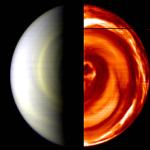 Swirling Clouds Over the South Pole of Venus
Swirling Clouds Over the South Pole of Venus
1.05.2007
What's happening over the South Pole of Venus? To find out, scientists sent the robot Venus Express spacecraft now orbiting Venus directly over the lower spin axis of Earth's overheated twin. Venus Express confirmed there a spectacular massive swirling storm system with similarities to the vortex recently imaged over Saturn's South Pole.
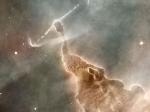 Dust Pillars of the Carina Nebula
Dust Pillars of the Carina Nebula
30.04.2007
Inside the head of this interstellar monster is a star that is slowly destroying it. The monster, actually an inanimate pillar of gas and dust, measures over a light year in length. The star, not itself visible through the opaque dust, is bursting out partly by ejecting energetic beams of particles.
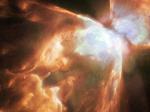 NGC 6302: Big, Bright, Bug Nebula
NGC 6302: Big, Bright, Bug Nebula
29.04.2007
The bright clusters and nebulae of planet Earth's night sky are often named for flowers or insects, and NGC 6302 is no exception. With an estimated surface temperature of about 250,000 degrees...
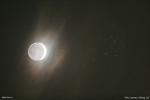 Young Moon and Sister Stars
Young Moon and Sister Stars
28.04.2007
A young crescent Moon shared the western sky with thin clouds and the sister stars of the Pleiades cluster in this early evening skyscape recorded on April 19th. Astronomical images of the well-known Pleiades often show the star cluster's alluring blue reflection nebulae, but they are washed-out here in the clouds and bright moonlight.
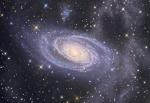 M81 in Ursa Major
M81 in Ursa Major
27.04.2007
One of the brightest galaxies in planet Earth's sky and similar in size to the Milky Way, big, beautiful spiral M81 lies 11.8 million light-years away in the northern constellation Ursa Major. This...
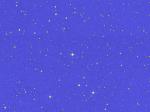 Gliese 581 and the Habitable Zone
Gliese 581 and the Habitable Zone
26.04.2007
The faint, unremarkable star centered in this skyview is Gliese 581, a mere 20 light-years away toward the constellation Libra. But astronomers are now reporting the discovery of a remarkable system of three planets orbiting Gliese 581, including the most earth-like planet found beyond our solar system.
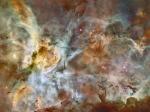 Carina Nebula Panorama from Hubble
Carina Nebula Panorama from Hubble
25.04.2007
In one of the brightest parts of Milky Way lies a nebula where some of the oddest things occur. NGC 3372, known as the Great Nebula in Carina, is home to massive stars and changing nebula.
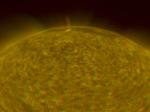 The Sun in Three Dimensions
The Sun in Three Dimensions
24.04.2007
What does the Sun look like in all three spatial dimensions? To find out, NASA launched two STEREO satellites to perceive three dimensions on the Sun much like two eyes allow humans to perceive three dimensions on the Earth.
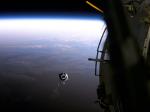 A Supply Ship Approaches the Space Station
A Supply Ship Approaches the Space Station
23.04.2007
Looking out a window of the International Space Station brings breathtaking views. Visible vistas include a vast and colorful Earth, a deep dark sky, and an occasional spaceship sent to visit the station. Visible on September 20 of last year was a Soyuz TMA-9 spacecraft carrying not only supplies but also three new astronauts.
 Smooth Sections on Asteroid Itokawa
Smooth Sections on Asteroid Itokawa
22.04.2007
Why are parts of this asteroid's surface so smooth? No one is yet sure, but it may have to do with the dynamics of an asteroid that is a loose pile of rubble rather than a solid rock.
|
January February March April May June July August September October November December |
|||||||||||||||||||||||||||||||||||||||||||||||||